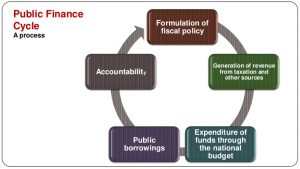Nestled in the Eastern Himalayas, Sikkim is a state renowned for its breathtaking landscapes and rich biodiversity. This small but vibrant region is also making significant strides in horticulture and floriculture, establishing itself as a key player in the national and international markets.
Horticulture in Sikkim: Cultivating Prosperity
Sikkim's horticultural prowess is deeply rooted in its fertile land and favorable climatic conditions. The state government has also been actively promoting horticultural practices through various initiatives and schemes.
Key Horticultural Produce:
Fruits: Sikkim is known for its high-quality fruits, including:
Sikkim mandarin (orange)
Pears
Kiwi
Papaya
Bananas
Vegetables: A wide variety of vegetables thrive in Sikkim's climate:
Traditional vegetables like beans and garden peas
Common vegetables such as tomatoes, cole crops, and radishes
Other cucurbits like chayote and potatoes
Spices: Sikkim's spice production adds another dimension to its horticultural sector:
Large cardamom
Ginger
Turmeric
Cherry pepper
Government Initiatives:
The Sikkim government, through its Horticulture and Cash Crop Development Department, plays a crucial role in fostering horticultural growth. Key initiatives include:
Providing financial assistance and subsidies to farmers.
Organizing training programs and workshops on modern cultivation techniques.
Facilitating market linkages for farmers to sell their produce.
Establishing nurseries and demonstration farms to promote new varieties and technologies.
Floriculture in Sikkim: A Budding Industry
Sikkim's varied topography and temperate climate provide an ideal environment for cultivating a diverse range of flowers. The state has emerged as a significant producer of cut flowers, contributing to both domestic and export markets.
Key Floricultural Produce:
Orchids: Sikkim is particularly famous for its orchids, especially the Cymbidium variety.
Other Flowers: A wide array of flowers are commercially cultivated in Sikkim:
Roses
Lilies
Gladioli
Anthuriums
Carnations
Gerberas
Alstroemerias
Zantedeschia
Factors Driving Floricultural Growth:
Favorable Climate: Sikkim's temperate climate allows for year-round cultivation of various flower species.
Skilled Workforce: The state has a skilled workforce engaged in floriculture, ensuring high-quality production.
Government Support: The government provides infrastructure, training, and marketing support to floriculturists.
Increasing Demand: There is a growing demand for flowers in both domestic and international markets, creating opportunities for Sikkim's floriculture industry.
Challenges and Future Prospects:
While Sikkim's horticulture and floriculture sectors hold immense potential, there are challenges that need to be addressed:
Limited Accessibility: The state's hilly terrain poses challenges for transportation and market access.
Post-Harvest Losses: Lack of adequate post-harvest infrastructure can lead to significant losses.
Climate Change: Changing weather patterns and increasing incidences of natural disasters pose risks to crop production.
Despite these challenges, the future of horticulture and floriculture in Sikkim appears bright. The government's continued support, coupled with the adoption of modern technologies and sustainable practices, can further enhance the growth and prosperity of these sectors.




